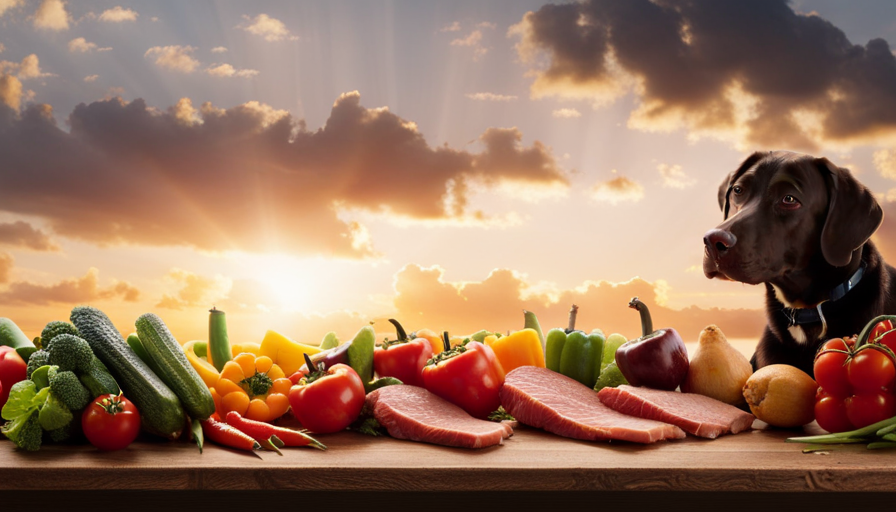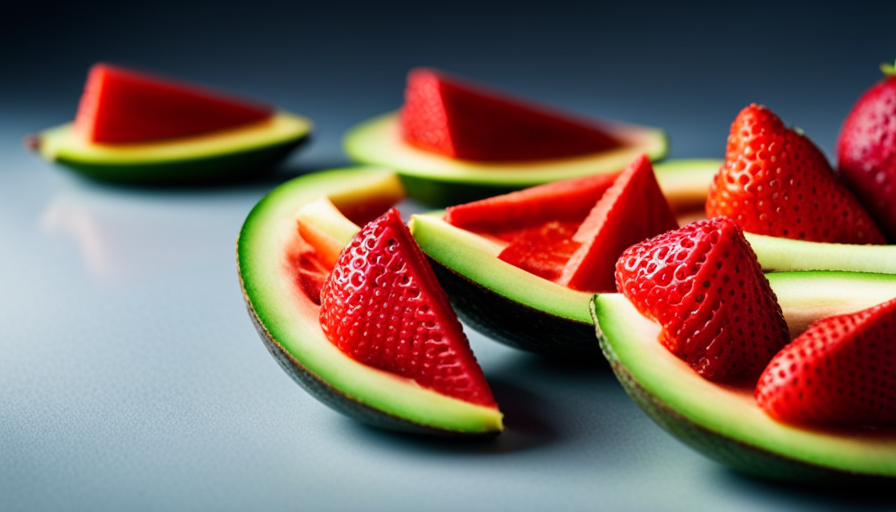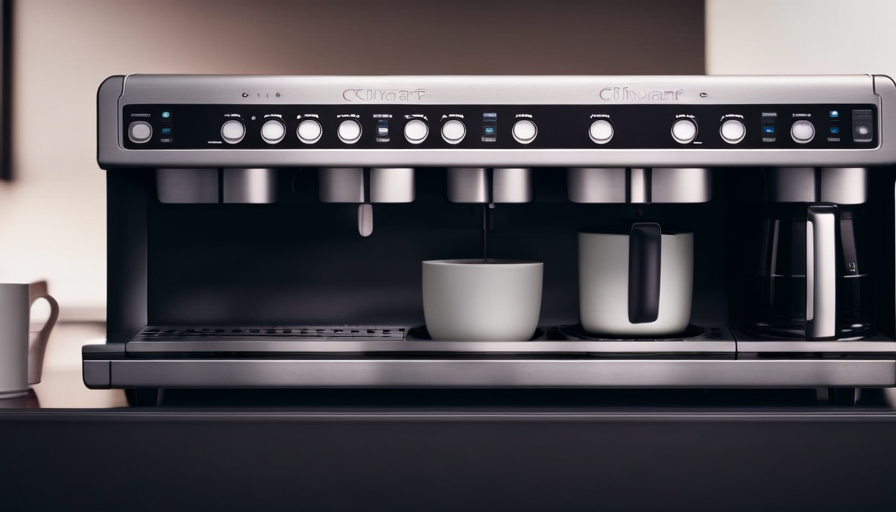While sitting in my kitchen, I pondered the ideal diet for my cherished furry friend, and a familiar question arose: is raw food actually superior for dogs?
The evolutionary diet of canines, rooted in their ancestors’ hunting and scavenging habits, suggests that a raw food diet may align more closely with their biological needs.
But is there scientific evidence to support this claim? In this article, we will delve into the benefits of a raw food diet for dogs, addressing concerns that often arise, such as nutritional imbalances and potential health risks.
We will explore the role of commercial dog food and examine scientific studies and research that shed light on the topic. Additionally, personal testimonials and experiences will provide insights into real-life outcomes.
However, it is crucial to consult with a veterinarian to ensure a well-rounded understanding and guidance when considering a raw food diet for your canine companion.
By the end of this article, you will be equipped with the knowledge to make an informed decision regarding your dog’s diet.
Key Takeaways
- Raw food diets for dogs are rooted in their evolutionary diet and can provide numerous health benefits such as improved digestion, increased energy levels, healthier skin and coat, and reduced allergies.
- Raw food diets may contain harmful bacteria like Salmonella or E. coli, which can cause serious illness in both dogs and humans.
- A raw food diet may not provide all necessary nutrients, so supplementation may be required to ensure a balanced diet.
- Consultation with a veterinarian is essential before switching to a raw food diet to ensure the best nutrition and address any specific dietary needs of the dog.
The Evolutionary Diet of Dogs
If you want to truly understand what’s best for your furry friend, you should consider the evolutionary diet of dogs and how it can impact their overall health and well-being. Dogs have evolved over thousands of years, adapting to various environments and developing unique traits that allow them to thrive. One of these evolutionary adaptations is their ability to digest and utilize raw food effectively.
In the wild, dogs’ ancestors relied on a natural diet consisting of raw meat, bones, and organs. This diet provided them with essential nutrients, enzymes, and beneficial bacteria that contributed to their overall health. Today, many argue that feeding dogs a raw food diet mimics their ancestral diet and is therefore better for their overall well-being.
Research suggests that feeding dogs a raw food diet can have several benefits. It’s believed to improve digestion, promote healthier skin and coat, increase energy levels, and support a stronger immune system. Additionally, raw food diets are often free from additives, preservatives, and fillers commonly found in commercial dog food.
Understanding the evolutionary adaptations of dogs and their natural diet can help us make informed decisions about their nutrition. By considering a raw food diet for our furry friends, we can provide them with the nutrients they need to thrive.
In the next section, we’ll delve deeper into the specific benefits of a raw food diet for dogs.
The Benefits of a Raw Food Diet
When it comes to the benefits of a raw food diet for dogs, there are several key points to consider. Firstly, a raw food diet can greatly improve digestion and nutrient absorption in dogs. This is because raw food is easier for dogs to digest and contains more natural enzymes and nutrients that are essential for their overall health.
Additionally, a raw food diet can lead to healthier skin and coat in dogs. The high levels of omega-3 fatty acids found in raw food can help reduce inflammation and promote a shiny, lustrous coat.
Lastly, a raw food diet can provide dogs with increased energy and vitality. The natural, unprocessed ingredients in raw food can help boost their immune system and provide them with the necessary nutrients to thrive.
Improved Digestion and Nutrient Absorption
Feeding dogs raw food significantly enhances their digestion and allows them to absorb nutrients like never before, resulting in a supercharged and unstoppable digestive system. This is because a raw food diet improves gut health, which is crucial for efficient digestion.
Raw food contains natural enzymes and beneficial bacteria that aid in breaking down food, making it easier for dogs to absorb nutrients. Additionally, the absence of heat processing in raw food preserves the natural vitamins and minerals, ensuring optimal nutrient absorption.
By providing dogs with a diet that supports their digestive system, their overall health and wellbeing are greatly improved. Transitioning into the next section about healthier skin and coat, a well-functioning digestive system is key to unlocking the full potential of their external appearance.
Healthier Skin and Coat
With a nutrient-rich diet, their skin becomes radiant and their coat becomes lustrous, leaving them feeling and looking their absolute best.
Natural supplements and proper grooming techniques play a vital role in maintaining a dog’s skin and coat health.
Raw food diets provide essential nutrients, such as omega-3 fatty acids and biotin, which promote healthy skin and a shiny coat. These nutrients help reduce skin allergies, itching, and dryness, while also preventing excessive shedding.
Additionally, raw food diets often include natural supplements like fish oil and coconut oil, which further improve skin and coat health.
Regular grooming, including brushing and bathing, helps remove dead hair and distribute natural oils, resulting in a healthier coat.
By focusing on their skin and coat, dogs experience improved overall well-being and are ready to tackle the next topic of increased energy and vitality.
Increased Energy and Vitality
Imagine your furry friend bounding with boundless energy, ready to conquer the world with a vibrant and lively spirit. Feeding your dog a raw food diet can help achieve this level of vitality. Studies have shown that dogs on a raw food diet experience increased stamina and improved overall health. The nutrients found in raw food, such as lean meats, fruits, and vegetables, provide a natural source of energy that is easily absorbed by your dog’s body. This leads to a noticeable difference in their energy levels and overall zest for life.
To understand the impact of a raw food diet on your dog’s energy and vitality, let’s take a closer look at the nutrients it provides. In the table below, you can see the key components of a raw food diet and their benefits for your dog:
| Nutrient | Benefit |
|---|---|
| Lean meats | High-quality protein for muscle development |
| Fruits and vegetables | Antioxidants for immune support |
| Omega-3 fatty acids | Promote healthy skin and coat |
| Natural enzymes | Aid in digestion and nutrient absorption |
| Probiotics | Support a healthy gut microbiome |
By incorporating these essential nutrients into your dog’s diet, you can expect to see increased energy levels, improved stamina, and an overall boost in their vitality. However, it’s important to address concerns about raw food to ensure you’re making the best decision for your furry friend.
Addressing Concerns about Raw Food
Despite some concerns, raw food can provide dogs with a natural and nutrient-rich diet. Evolutionary evidence suggests that dogs are biologically designed to eat raw meat, bones, and other animal products. Their ancestors, wolves, primarily consumed raw food, which indicates that it’s a more natural form of sustenance for canines.
However, it’s important to consider potential risks associated with raw food diets. Raw meat may contain harmful bacteria such as Salmonella or E. coli, which can pose health risks to both dogs and humans. Additionally, an unbalanced raw food diet may lead to nutritional deficiencies or imbalances if not properly formulated. It’s crucial to consult with a veterinarian or a veterinary nutritionist to ensure that the raw food diet meets all of the dog’s nutritional needs.
Despite these concerns, many advocates of raw food diets argue that the benefits outweigh the risks. Raw food diets can provide dogs with essential nutrients, enzymes, and phytochemicals that may support their overall health and vitality.
Transitioning to the subsequent section about the role of commercial dog food, it’s important to consider the various options available to provide a balanced and complete diet for dogs.
The Role of Commercial Dog Food
When it comes to commercial dog food, there are several key points to consider. First, regulation and quality control play a crucial role in ensuring that the food meets the necessary standards for safety and nutrition.
Second, commercial dog food provides balanced nutrition, offering a convenient and easy way to ensure that your furry friend is getting all the necessary nutrients.
Lastly, commercial dog food offers a wide range of options to meet different dietary needs, catering to specific requirements such as allergies or sensitivities.
Regulation and Quality Control
Although there are regulations and quality control measures in place, it’s important to consider the potential risks associated with feeding dogs raw food. While regulatory standards and quality assurance procedures aim to ensure the safety of commercial dog food, they may not extend to raw diets. The absence of specific regulations for raw food means that there is a lack of oversight regarding the sourcing, handling, and processing of ingredients. This can increase the risk of bacterial contamination, such as Salmonella or E. coli, which can be harmful to both dogs and their owners. To illustrate the potential risks, consider the following table:
| Potential Risks of Feeding Dogs Raw Food |
|---|
| Bacterial Contamination |
| Nutritional Imbalances |
| Increased Risk of Foodborne Illness |
Transitioning to the subsequent section about balanced nutrition and convenience, it is important to weigh the potential risks against the benefits of raw food diets.
Balanced Nutrition and Convenience
With a well-balanced and convenient approach, dog owners can provide their furry companions with a diet that is both nourishing and easy to manage.
Balanced nutrition is essential for dogs to thrive and maintain optimal health. Raw food diets can offer a wide range of nutrients, including vitamins, minerals, and essential fatty acids. These diets often include a variety of protein sources, such as meat, organs, and bones, which can help ensure that dogs receive all the necessary amino acids for their overall well-being.
Additionally, the convenience of raw food diets can be appealing to busy pet owners. Pre-packaged raw food meals are available in pet stores and online, making it easy to provide dogs with a balanced and wholesome diet.
Transitioning into the subsequent section about varied options for dietary needs, it is important to consider the specific nutritional requirements of different dog breeds and life stages.
Varied Options for Dietary Needs
A wide array of dietary options are available to cater to the unique nutritional needs of different breeds and life stages of canines.
Dogs have evolved and adapted over thousands of years, developing specific nutrient requirements. Raw food diets can offer a varied approach to meeting these needs. By feeding a raw food diet, owners have the flexibility to provide a mix of proteins, fats, and carbohydrates that mimic the natural diet of their canine counterparts. This can be particularly beneficial for dogs with specific dietary needs or allergies.
For example, a dog with a grain sensitivity may benefit from a raw food diet that eliminates grains altogether. Additionally, raw food diets can provide a range of textures and flavors, promoting a healthy appetite and overall wellbeing.
Transitioning into the subsequent section about scientific studies and research, it is important to explore the evidence behind these claims.
Scientific Studies and Research
Numerous scientific studies and research have revealed that feeding dogs a raw food diet is like giving their bodies a natural fuel that optimizes their health and well-being.
Dogs have evolved as carnivores, with physiological and anatomical adaptations that make them well-suited for consuming raw meat. Their teeth and jaws are designed for tearing and chewing raw meat, their stomachs produce more acidic gastric juices to break down and digest raw food, and their short intestinal tracts allow for quick digestion of raw meat.
In addition to these evolutionary adaptations, dogs have specific nutritional requirements that can be met more effectively through a raw food diet. Raw meat provides dogs with essential amino acids, vitamins, and minerals that can be lost or diminished during the cooking process. Furthermore, raw food diets can be tailored to individual dogs, taking into account their specific dietary needs, such as allergies or sensitivities to certain ingredients.
Considering the individual needs of each dog is crucial when determining the best diet for them. Factors such as age, breed, activity level, and any existing health conditions should be taken into consideration. By understanding the evolutionary adaptations and nutritional requirements of dogs, as well as considering individual considerations, we can provide them with a raw food diet that promotes their overall health and well-being without compromising their specific needs.
Considerations for Individual Dogs
When considering the best diet for my dog, I need to take into account their age, weight, and activity level. These factors play a crucial role in determining the appropriate amount and type of food to provide.
Additionally, specific health conditions and dietary restrictions should be considered, as certain dogs may require specialized diets to address their individual needs.
Lastly, personal preference and feeding practices should also be taken into consideration, as some dogs may have preferences or dietary habits that need to be accommodated in their feeding routine.
By considering these factors, I can ensure that my dog receives a well-balanced and tailored diet that supports their overall health and well-being.
Age, Weight, and Activity Level
Dogs of different ages, weights, and activity levels can benefit from a raw food diet. Here’s why:
-
Age and weight management: Raw food diets can be tailored to meet the specific nutritional needs of puppies, adult dogs, and senior dogs. For instance, puppies require higher levels of protein and fat to support their growth, while senior dogs may benefit from lower fat content to maintain a healthy weight.
-
Exercise and activity levels: Raw food diets can provide the necessary energy levels for active and working dogs. The high protein content helps build and repair muscles, while the natural vitamins and minerals support overall endurance and performance.
-
Weight management: Raw food diets can be customized to help dogs lose or maintain weight. By controlling portion sizes and incorporating lean meats, dogs can achieve and maintain a healthy body weight.
Considering these factors, it’s important to note that specific health conditions and dietary restrictions may require additional considerations.
Specific Health Conditions and Dietary Restrictions
If you have specific health conditions or dietary restrictions, there are still plenty of options available to ensure your furry friend receives the best possible nutrition. When it comes to specific dietary requirements, raw food can be a great choice for dogs. However, it’s important to consult with a veterinarian before making any changes to your dog’s diet, especially if they have specific health conditions or dietary restrictions.
Certain health conditions, such as pancreatitis or kidney disease, may require a modified or specialized diet. Additionally, some dogs may have allergies or sensitivities to certain ingredients, which need to be taken into consideration when choosing their food.
While raw food can provide many benefits, there are also potential risks, such as bacterial contamination. Therefore, it’s crucial to handle raw food properly and ensure that it’s sourced from reputable suppliers.
Transitioning into the next section, personal preference and feeding practices also play a role in determining the best diet for your dog.
Personal Preference and Feeding Practices
Your furry friend’s diet should align with your personal preferences and feeding practices, creating a harmonious and enjoyable mealtime experience.
When considering whether raw food is better for dogs, it’s important to understand their evolutionary origins. Dogs are descended from wolves, who primarily consumed raw meat and bones in the wild. This suggests that a raw food diet may be more closely aligned with their natural dietary needs.
Additionally, proponents of raw food diets for dogs claim that it can provide various health benefits, including improved digestion, healthier skin and coat, and increased energy levels. However, it’s crucial to consult with a veterinarian before making any changes to your dog’s diet to ensure it’s appropriate for their specific health needs.
Transitioning to a raw food diet requires careful planning and consideration of your dog’s individual requirements.
Transitioning to a Raw Food Diet
When it comes to transitioning to a raw food diet, it’s like embarking on a culinary adventure for your furry friend. To ensure a smooth transition, here are some transitioning tips to keep in mind:
-
Gradual introduction: Start by adding small amounts of raw food to your dog’s current diet and gradually increase the proportion over time. This allows their digestive system to adapt to the new diet without causing any digestive issues.
-
Balanced meals: Ensure that your dog’s raw food diet includes all the necessary nutrients, such as proteins, fats, carbohydrates, vitamins, and minerals. Consult with a veterinarian or a canine nutritionist to create a balanced meal plan tailored to your dog’s specific needs.
-
Monitor their health: Keep a close eye on your dog’s overall health during the transition period. Look out for any signs of digestive upset, such as diarrhea or vomiting. If you notice any issues, consult with a veterinarian to address them promptly.
-
Potential risks: While a raw food diet can offer numerous benefits, it’s important to be aware of potential risks, such as bacterial contamination or nutrient deficiencies. Take necessary precautions, such as handling raw food safely and regularly monitoring your dog’s health.
Transitioning to a raw food diet requires careful consideration and monitoring. Personal testimonials and experiences can provide valuable insights into the benefits and challenges of this feeding practice.
Personal Testimonials and Experiences
In my personal experience, transitioning my dog to a raw food diet has led to numerous success stories and positive results. I have witnessed improvements in my dog’s coat, digestion, and overall energy levels. However, it wasn’t without its challenges, as I had to make adjustments to ensure my dog received a balanced and nutritious diet.
Finding the right balance for each individual dog is crucial, as their nutritional needs may vary.
Success Stories and Positive Results
One thing that’s truly amazing about raw food is how many success stories and positive results pet owners have seen in their dogs. Numerous testimonials and personal experiences highlight the benefits of a raw food diet for dogs.
Many pet owners have reported improved coat condition, increased energy levels, and better digestion in their dogs after switching to a raw food diet. Additionally, raw food has been credited with alleviating allergies, reducing food sensitivities, and promoting overall health and vitality in dogs.
These success stories and positive results provide strong evidence for the effectiveness of a raw food diet in improving the well-being of our canine companions. However, alongside these successes, there are also challenges and adjustments that need to be made when transitioning to a raw food diet for dogs.
Challenges and Adjustments Made
Transitioning to a raw food diet for our canine companions can present some challenges and require adjustments, but the rewards of improved well-being and vitality make it well worth the effort.
One of the main challenges is ensuring a smooth transition from a processed diet to raw food. Some dogs may experience digestive upset or refuse to eat initially. Patience and gradual introduction of raw food can help overcome these challenges.
Concerns about nutritional balance also arise during the adjustment period. It’s important to consult with a veterinarian or a canine nutritionist to ensure that the dog’s diet is properly balanced with the necessary nutrients.
Testimonials and success stories from other dog owners who have successfully transitioned to a raw food diet can provide valuable guidance and inspiration.
Finding the right balance for each dog is a key aspect of optimizing their health and well-being, and it requires careful consideration of their individual needs and preferences.
Finding the Right Balance for Each Dog
To ensure your canine companion thrives on their new diet, it’s essential to find the perfect balance tailored to their unique needs and preferences. Finding the right balance is crucial for providing customized nutrition that meets your dog’s specific requirements.
Here are three key considerations to help you achieve this:
-
Age and life stage: Dogs have different nutritional needs depending on their age and life stage. Puppies, adult dogs, and senior dogs all require different levels of nutrients. Adjusting the balance of raw food accordingly can help support their growth, maintenance, and overall well-being.
-
Activity level: The amount of exercise and activity your dog gets also impacts their nutritional requirements. Highly active dogs may need more protein and calories, while less active dogs may require a more moderate balance. Assessing your dog’s activity level and adjusting their raw food intake can help maintain their optimal weight and energy levels.
-
Individual preferences and sensitivities: Dogs, like humans, have their own preferences and sensitivities when it comes to food. Some dogs may thrive on a higher protein diet, while others may do better with more fruits and vegetables. Pay attention to your dog’s response to different ingredients and adjust the balance accordingly to ensure they’re getting the nutrition they need.
Finding the right balance of raw food for your dog is crucial for their overall health and well-being. However, it’s important to remember that every dog is unique, and consultation with a veterinarian is essential to ensure you’re providing the best nutrition for your furry friend.
The Importance of Consultation and Vet Guidance
Regular check-ups and health monitoring are crucial when it comes to ensuring the well-being of our dogs. By consulting with a veterinarian on a regular basis, we can stay informed about any potential health issues and address them promptly.
Additionally, seeking professional advice for dietary choices ensures that our dogs receive the proper nutrition they need to thrive. Each dog is unique, with individual needs and concerns, and a vet can provide guidance tailored to their specific circumstances.
Regular Check-Ups and Health Monitoring
While it’s essential to schedule regular check-ups for your furry friend, monitoring their overall health is equally important. Regular check-ups allow veterinarians to detect any potential health issues early on and provide necessary treatment.
Additionally, health monitoring involves observing your dog’s behavior, appetite, weight, and energy levels on a daily basis. By doing so, you can identify any changes or abnormalities that may indicate an underlying problem. Monitoring also includes keeping track of their bowel movements, urinary habits, and skin condition. These observations provide valuable information to your veterinarian and help ensure your dog’s well-being.
Regular check-ups and health monitoring go hand in hand, forming the foundation for maintaining your dog’s optimal health. By staying vigilant and proactive, you can address any concerns promptly and seek professional advice for dietary choices without skipping a beat.
Professional Advice for Dietary Choices
One way to ensure your furry friend stays healthy is by seeking professional guidance on what to feed them. Dogs have evolved over thousands of years with specific dietary needs, and it’s important to understand these evolutionary adaptations.
Professional recommendations can help you make informed decisions regarding your dog’s diet. Veterinarians and animal nutritionists have the knowledge and expertise to provide evidence-based advice on the best dietary choices for your pet. They can assess your dog’s individual needs, taking into consideration factors such as age, breed, activity level, and any health concerns.
By following their guidance, you can ensure that your dog is receiving the proper nutrients and maintaining a balanced diet. Seeking professional advice is an essential step in addressing individual dog’s needs and concerns, as it ensures their overall well-being.
Addressing Individual Dog’s Needs and Concerns
When it comes to addressing an individual dog’s needs and concerns, it is crucial to consider their unique evolutionary adaptation and nutritional requirements. Dogs have evolved from wild ancestors who primarily consumed raw meat, bones, and organs. As a result, their bodies are adapted to digest and utilize these types of foods efficiently. However, it is important to note that individual dogs may have different needs and sensitivities. Consulting with a veterinarian or a professional canine nutritionist can help determine the best dietary choices for your furry companion. To gain a deeper understanding of your dog’s specific needs, consider the following table:
| Nutritional Requirement | Raw Food | Commercial Dog Food |
|---|---|---|
| Protein | High | Varies |
| Fruits and Vegetables | Limited | Moderate to High |
| Digestibility | High | Varies |
| Dental Health | Good | Varies |
| Cost | Moderate | Varies |
By considering these factors, you can make an informed decision about the best diet for your dog’s overall health and well-being.
Making an Informed Decision
To make an informed decision about whether raw food is better for your dog, you should consider the potential benefits and risks.
When it comes to the evolutionary adaptations of dogs, it’s important to note that their ancestors were carnivores and primarily consumed raw meat. Proponents of raw food argue that feeding dogs a diet closer to what their ancestors ate can provide numerous benefits. Raw food is often praised for its potential to improve digestion, boost energy levels, promote healthier skin and coat, and reduce allergies.
However, it’s important to acknowledge the potential risks associated with feeding raw food to dogs. Raw meat can contain harmful bacteria such as Salmonella or E. coli, which can cause serious illness in both dogs and humans. Additionally, a raw food diet may not provide all the necessary nutrients and may require supplementation to ensure a balanced diet.
It’s essential to consult with a veterinarian and conduct thorough research before making the switch to a raw food diet. By considering both the potential benefits and risks, you can make an informed decision that best suits your dog’s individual needs and concerns.
Frequently Asked Questions
Can I feed my dog a raw food diet without consulting a veterinarian?
Feeding your dog a raw food diet without consulting a veterinarian may pose potential risks and drawbacks. It’s important to remember the adage ‘Better safe than sorry’ when it comes to your pet’s health.
A qualified veterinarian can assess your dog’s specific needs, provide guidance on a balanced raw food diet, and address any potential risks, such as nutritional deficiencies or bacterial contamination. Their expertise ensures your dog’s well-being and minimizes any potential harm.
Are there any risks or potential drawbacks to feeding my dog a raw food diet?
There are indeed risks associated with feeding dogs a raw food diet, as well as potential drawbacks.
One of the main concerns is the risk of bacterial contamination, which can lead to food poisoning in both dogs and humans.
Another risk is the imbalance of nutrients, as it can be challenging to provide a complete and balanced diet consistently.
Additionally, there is the potential for injury from bones or other hard objects in the raw food.
Therefore, it’s important to carefully consider these risks and drawbacks before deciding to feed your dog a raw food diet.
Do all dogs benefit equally from a raw food diet?
All dogs are not created equal when it comes to their dietary needs. Different breeds have specific considerations that must be taken into account when determining their optimal diet. While a raw food diet may benefit some dogs, it may not be suitable for all.
It’s important to consult a veterinarian to determine the best diet for your individual dog, considering factors such as breed, age, and any underlying health conditions.
How can I ensure that my dog is receiving all the necessary nutrients on a raw food diet?
To ensure nutritional balance and the safety of a raw food diet for my dog, I follow a few key guidelines.
First, I provide a variety of protein sources such as lean meats, organs, and bones.
I also include fruits and vegetables to supply essential vitamins and minerals.
Additionally, I incorporate supplements like fish oil and calcium to meet their specific needs.
Regular consultations with a veterinarian and blood tests help monitor my dog’s health and ensure they’re receiving all necessary nutrients.
Are there any specific health conditions or situations in which a raw food diet may not be suitable for a dog?
While a raw food diet can provide numerous benefits for dogs, there are specific health risks and situations where it may not be suitable. Dogs with compromised immune systems, certain medical conditions, or those prone to foodborne illnesses may be at higher risk. In such cases, alternative dietary options like cooked or commercial dog food can be considered. It’s essential to consult with a veterinarian to determine the most appropriate diet for your dog’s specific needs.
What Are the Benefits of Raw Food for Puppies Compared to Other Options?
Raw food is considered by many to be the best food for puppies due to its numerous benefits. It provides essential nutrients, improves digestion, boosts energy levels, and enhances skin and coat health. Compared to other options, raw food closely resembles a dog’s natural diet, supporting overall health and vitality.
Conclusion
In conclusion, after reviewing the scientific evidence and personal testimonials, it’s clear that a raw food diet can be beneficial for dogs. Just as a river flows naturally, providing nourishment and vitality to the surrounding landscape, a raw food diet can fuel a dog’s body with the nutrients it needs to thrive.
However, it’s important to consult with a veterinarian to ensure a smooth transition and tailor the diet to meet the specific needs of each individual dog. Making an informed decision based on research and professional guidance will ultimately lead to the best outcome for our beloved canine companions.










